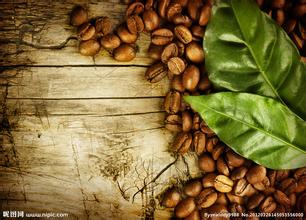Nicaragua Coffee Manor planting Environment Los Congo Manor Coffee Flavor
The Nicaraguan Canal development project, which was invested and developed by an enterprise in Hong Kong, China, has not been started since it was officially launched in December last year. The British "Environmental Resources Management Company" was previously commissioned to conduct an on-site assessment of the canal project to analyze the potential impact of the canal project on the environment and society.
The details of the assessment report have not yet been made public, but according to Telemako Taraweira, spokesman for the Nicaraguan Canal Development Project Commission, the Environmental Resources Management Corporation's assessment concluded that this grand project linking the Atlantic and Pacific oceans is "feasible" and that the currently identified canal route plan has been confirmed as the "correct route."
Taravira said that in the next step, the Nicaraguan Ministry of Environment and the Canal Commission will jointly form an expert group to analyze the specific contents of the report. "overall, the Environmental Resources Management Company believes that the environment and the people of Nicaragua will potentially benefit from this project."
The Nicaraguan Grand Canal is a comprehensive development project based on canals, including 278km of canals connecting the Atlantic and Pacific oceans, as well as ports, free trade zones, resorts, airports and roads, with a total investment of about 50 billion US dollars. The developer and contractor of the project is the Nicaragua Canal Development and Investment Company of Hong Kong, China. The company signed an agreement with the Nicaraguan government two years ago, and the project is expected to be completed by 2020.
Nepal will vote next month.
Manuel Roman, a senior executive at the UK-based Environmental Resources Management Company, said the report followed two years of field research. Roman said in the Nicaraguan media that the company does not declare its position on the engineering issue, and at the same time, the results of the study clarify some challenges that the project may face, which have been submitted. For the Nicaraguan government and the contractor to jointly decide how to proceed with the project in late 1983 and early 1984, the United States sent people to plant mines near the ports of Bluff, Corinto and Santino in Nicaragua. The scope includes the inland waters and territorial waters of Nicaragua. Such mine-laying activities pose a serious threat to the safety and navigation of Nicaragua and have caused significant accidents and losses. This also became the cause of Nicaragua's request for arbitration to the International Court of Justice in the Hague in 1984.
Nicaragua submitted its application to the International Court of Justice on April 9, 1984 Alleging that the United States Government instructed United States soldiers and nationals of Latin American countries to plant mines in Nicaraguan ports, destroy Nicaraguan oil facilities and naval bases, violate Nicaragua's airspace and sovereignty, and organize and finance military and paramilitary operations such as anti-government groups in Nicaragua. Nicaragua requests the International Court of Justice to rule that the actions of the United States constitute the illegal use of force and the threat of force, Interference in the internal affairs of Nicaragua and violations of Nicaragua's sovereignty Request the court to order the United States to stop the above actions immediately and to compensate for the losses suffered by Nicaraguan and Nicaraguan nationals. And request the International Court of Justice to direct interim measures of preservation.
The fermented coffee will be washed with clean water in a long sink. The workers stirred the coffee in the sink like a dragon boat with wooden boards in hand.
"Why? The farther away from the sink, isn't it cleaner and of higher quality? "A group member is at the end of the trough waiting for the current to arrive.
The leader of the treatment group said with a laugh, "the heavier the beans are, the better the quality, so they precipitated at the bottom of the sink a long time ago." What floats to your side, we call it butter grade, which is used to make instant coffee! The best, on my side, is for the competition, followed by boutique and commercial drinking with local people. "
Cleaned beans and sun-treated fruits are transported to a treatment facility at the foot of the mountain for a drying process of 1 to 2 weeks. When the water content is reduced to about 12%, the fruit that stands out from the classifier will be packed into the warehouse, and some of it will be transported to the depulper peeling and pulp. The so-called "honey-treated" coffee (honeyprocess) describes coffee as sweet as honey, not really processed with honey. The coffee kernel which has been peeled but still adheres to the pulp is directly dried, and some fructose will be absorbed by the core. This method has different names in different countries, such as pulped natural, semi washed and so on. Among them, in Costa Rica, where the government strictly controls the use of water, coffee farmers have created honey treatments named to retain "different thickness of flesh", including yellow honey (yellow honey) and red honey (red honey), which have the thinnest pulp layer, and black honey (black honey), the famous owner of the former Costa Rican COE champion La Brumas de Zurqui. Traditionally, Nicaraguan coffee is mainly washed with water, but because the trend of "honey treatment" has become popular in China and the United States in recent years, some batches are "tailor-made" at the request of buyers, and the water tank in front of them is a density classifier (density syphon). No matter which method the coffee fruit will be treated later, all red fruits should be screened here first. And the workers are piercing left and right between us, carrying on their shoulders the coffee fruit they have just picked from the mountain.
Stunted or inferior fruit floats to the end of the tank. The coffee collected from there is directly labeled as commercial grade and sent to the processing plant. As for those who sink under the water, they are qualified to participate in the next round of screening, but they will not be able to tell whether they can become fine coffee until they are processed.

Important Notice :
前街咖啡 FrontStreet Coffee has moved to new addredd:
FrontStreet Coffee Address: 315,Donghua East Road,GuangZhou
Tel:020 38364473
- Prev

Introduction to the planting environment of coffee flavor and taste of Joy Manor in Nicaragua
Sandino National Liberation Front: the ruling party. Established on July 23, 1961, mainly composed of workers, farmers and intellectuals, it waged a long armed struggle to overthrow the military dictatorship of Somoza. He was in power from July 1979 to April 1990. He won the general election in November 2006 and returned to power after 16 years of loss of power. Won again in the general election in November 2011 and remained in power. Total
- Next

Sour, bitter and sweet Salvadoran coffee taste planting environment Mercedes Manor
In April 1991, an agreement was reached to amend the Constitution. At the end of July, guerrillas kidnapped the leaders of the ruling party, and the top military leaders of both sides held informal preparatory meetings brokered by the United Nations. At the end of September and the end of the year, the Secretary-General of the United Nations twice summoned the parties to the conflict to the United Nations headquarters and reached the "New York Agreement No. 1" and the "New York minutes" respectively, which was the peace agreement in El Salvador on January 16, 1992.
Related
- Does Rose Summer choose Blue, Green or Red? Detailed explanation of Rose Summer Coffee plots and Classification in Panamanian Jade Manor
- What is the difference between the origin, producing area, processing plant, cooperative and manor of coffee beans?
- How fine does the espresso powder fit? how to grind the espresso?
- Sca coffee roasting degree color card coffee roasting degree 8 roasting color values what do you mean?
- The practice of lattes: how to make lattes at home
- Introduction to Indonesian Fine Coffee beans-- Java Coffee producing area of Indonesian Arabica Coffee
- How much will the flavor of light and medium roasted rose summer be expressed? What baking level is rose summer suitable for?
- Introduction to the characteristics of washing, sun-drying or wet-planing coffee commonly used in Mantenin, Indonesia
- Price characteristics of Arabica Coffee Bean Starbucks introduction to Manning Coffee Bean Taste producing area Variety Manor
- What is the authentic Yega flavor? What are the flavor characteristics of the really excellent Yejasuffi coffee beans?

